Kraków’s historic Jewish quarter is a bustling hive of hip bars, cafés, restaurants and shops, nestled among old synagogues, notable churches and informative museums.
A brief history of Kazimierz
Kazimierz dates back to 1335 when King Kazimierz the Great decided to create a new town to the west of Kraków, which he promptly named after himself.
The quarter became home to a sizeable Jewish population after King Jan Olbracht forced them out of Kraków’s Old Town in 1495.
The Second World War unleashed unimaginable cruelty and devastation on the quarter’s Jewish inhabitants, as they were forcibly moved to a ghetto in neighbouring Podgórze, south of the Vistula River. Many were later transported to concentration camps by the Nazis, never to return.
Neglected after the war, Kazimierz was rejuvenated when Steven Spielberg chose to film much of Schindler’s List in the area.
The quarter is now a great place for mooching around with lots of interesting places to stop and visit.
Tempel Synagogue

The newest of Kazimierz’s many synagogues, the Tempel Synagogue was founded in the mid-19th century, used as an ammunitions warehouse by the Nazis and given a significant facelift in the 1990s.
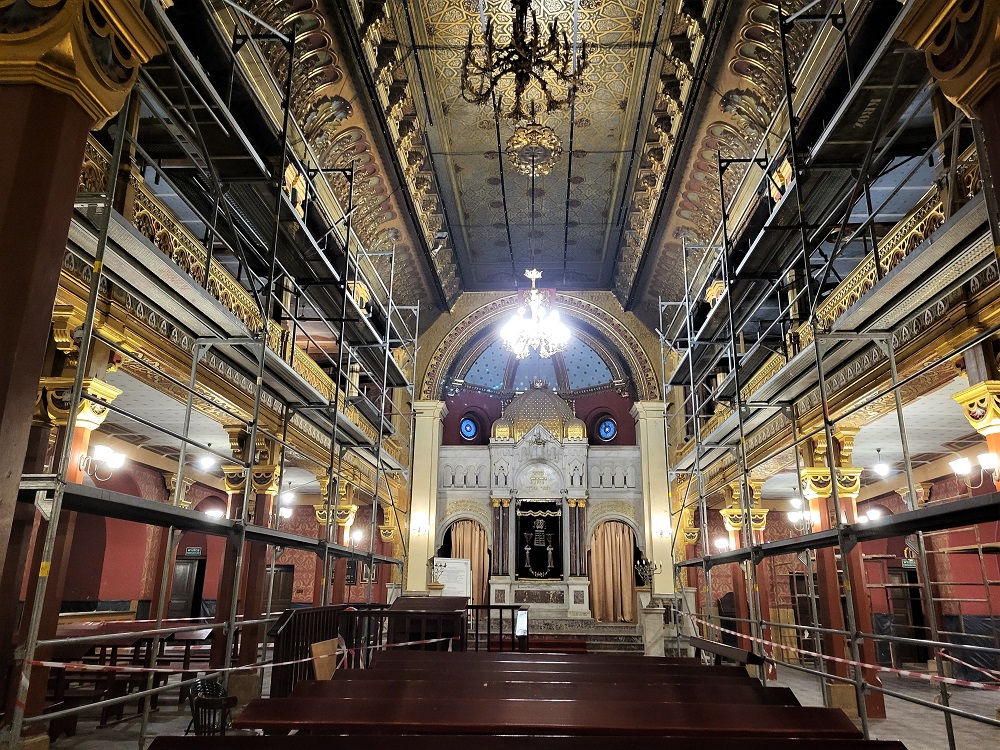
Today, the neo-Baroque synagogue is mostly used as a venue for festivals and concerts.

I popped inside the splendid synagogue, which features intriguing Moorish influences, and was dazzled by its spectacular ceiling (above).
Church of St Catherine

I’d been really keen to see the 14th century Church of St Catherine, which my guidebook described as “one of the most beautiful Gothic churches in Kraków”.
But when I went to have a look inside, I discovered it was closed between October and April, so I had to make do with admiring its enormous red-brick exterior instead (above).
Pauline Church on the Rock, also known as Skalka
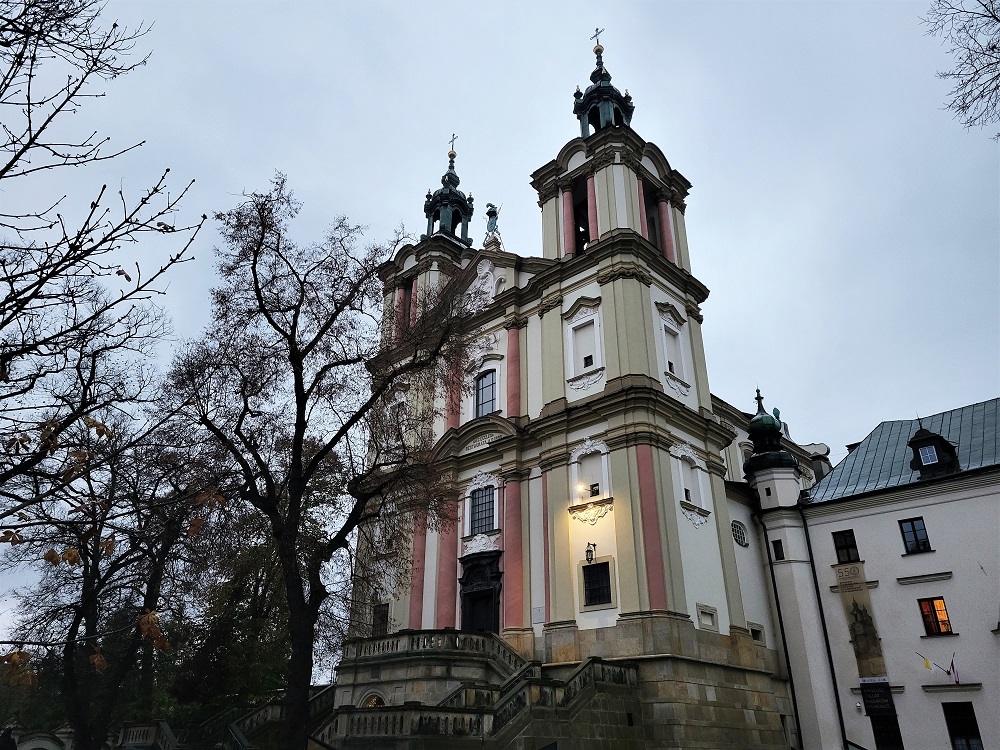
This wonderful church is at the far end of Kazimierz on the banks of the Vistula River and, as its name suggests, is built atop a rock.
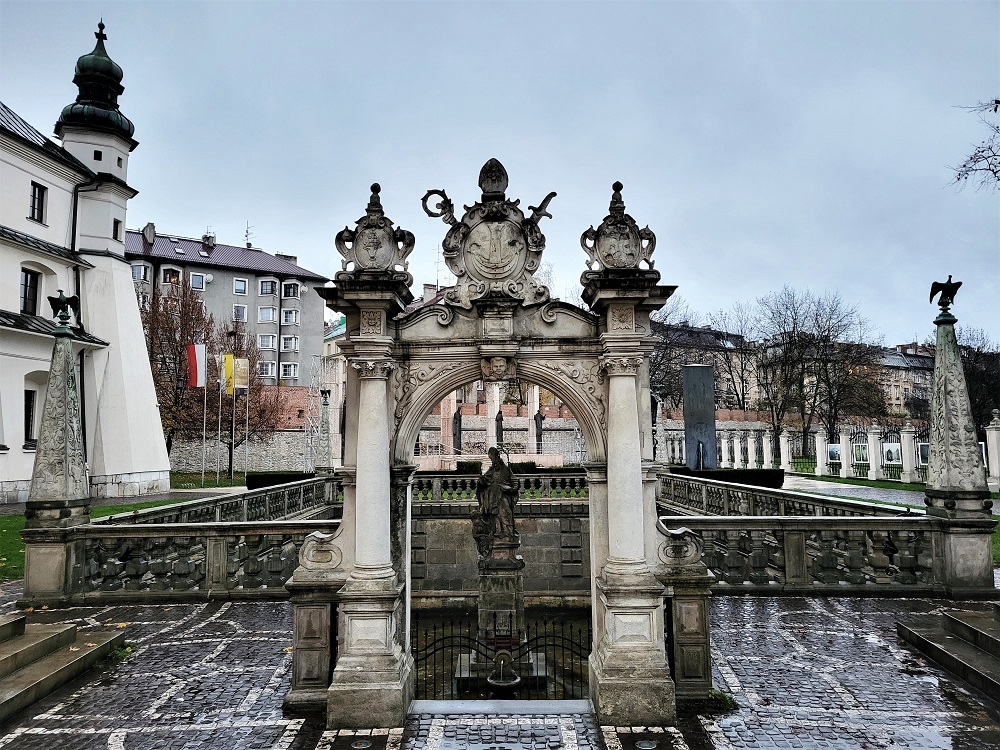
The church has a storied history. Founded in the 11th century, it’s the site of the murder of Saint Stanislaus, Bishop of Kraków, who was killed by King Boleslaw II in 1079, in a tale reminiscent of England’s King Henry II and Thomas á Becket, Archbishop of Canterbury.

According to the history books, Stanislaus and Boleslaw had a tumultuous relationship, but tempers flared when Stanislaus excommunicated Boleslaw over his adultery, causing the Polish king to accuse the bishop of treason.
When Boleslaw’s men baulked at the prospect of killing a bishop, Boleslaw decided to do the job himself.
The ensuing fall out saw Boleslaw deposed and replaced by his brother Wladyslaw I. The ex-king fled to Hungary, where he too was murdered a few years later.

The present, eye-catching Baroque church dates back to the 18th century and the decor inside is suitably lavish.

The crypt under the main body of the church is home to the national pantheon of Polish culture (above) and is the burial place of numerous notable Poles, including the poet Adam Asnyk and the artist Stanislaw Wyspiánski.
The Ethnographic Museum in Kraków

Kazimierz’s former town hall now plays host to Kraków’s Ethnographic museum, a superb collection of artifacts that introduces visitors to traditional Polish life and customs.

The museum’s ground floor recreates a series of rooms from Polish cottages and includes a replica of a traditional kitchen (above) and bedroom (below).

Upstairs, the museum features all manner of aspects of traditional life and customs, from farming methods and tools, to fabrics and musical instruments.

I was particularly fascinated by the displays of colourful traditional folk costumes (below).

But my favourite part of the museum was the exhibit dedicated to traditional advent displays.
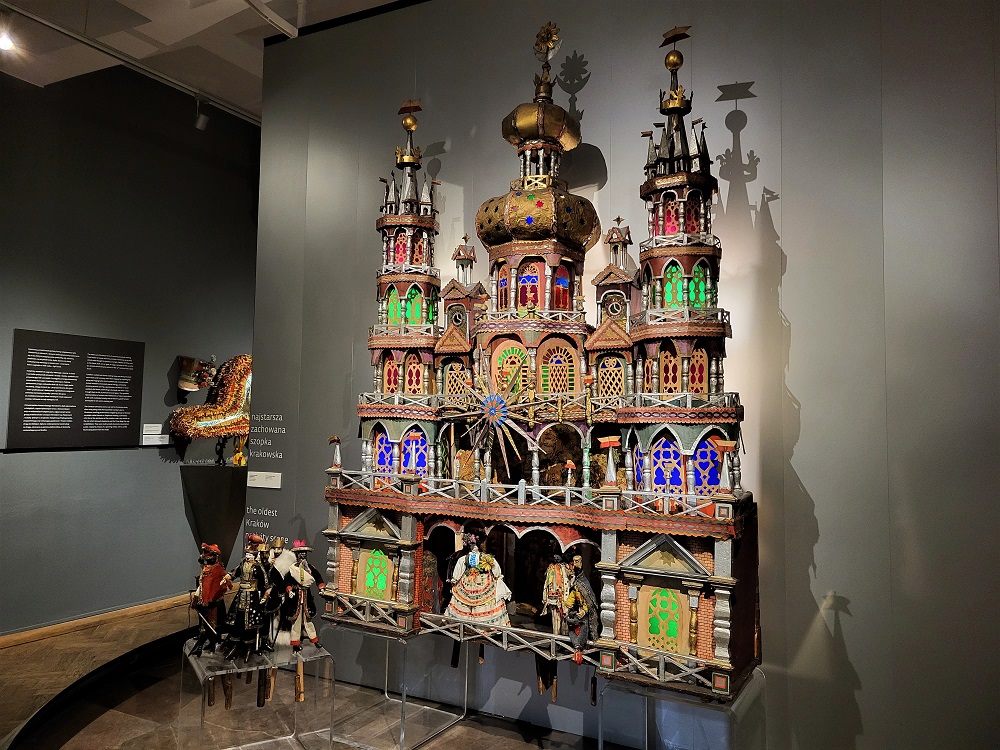
I was mesmerised by the colourful, intricate displays (above and below). They were delightful and must have taken so long to make.

The final floor of the museum was dedicated to religious artifacts (below) and I have to confess I didn’t spend as long in this part of the museum as it wasn’t quite to my taste.

I thoroughly enjoyed my visit to the Ethnographic Museum. It was a fascinating insight into the country’s traditional customs and costumes.
Corpus Christi Church
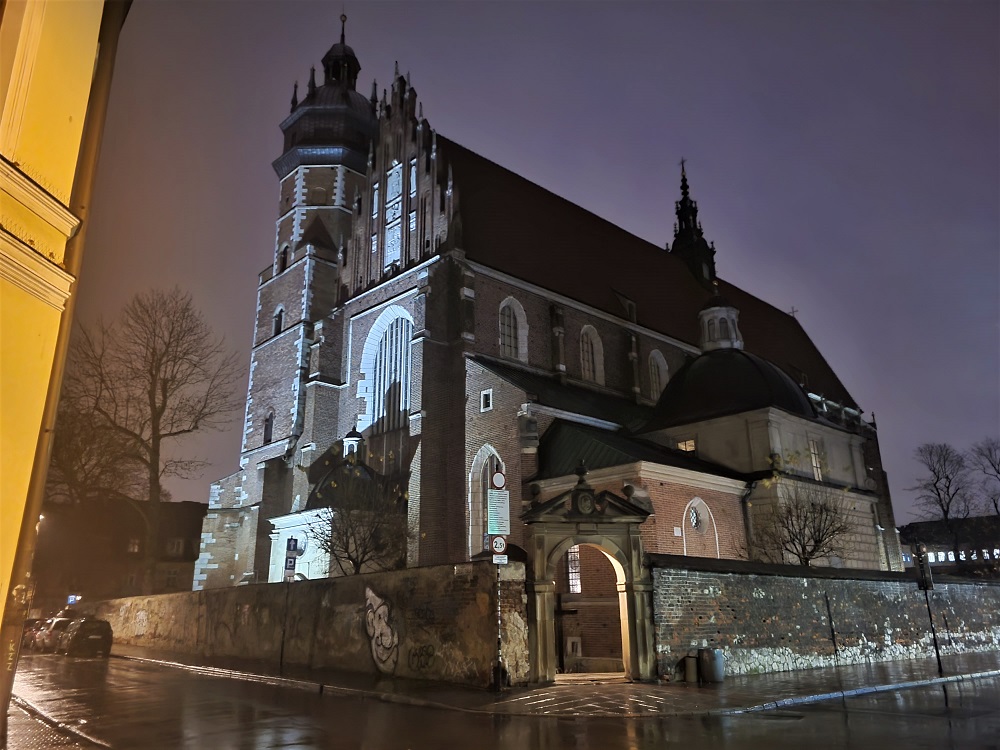
Don’t be fooled by the fairly ordinary, if humongous, red brick exterior of the Corpus Christi Church, for inside, it’s a jaw-dropping affair.

The huge Gothic church is situated around the corner from Kazimierz’s Market Square behind a brick wall.

Founded by Kazimierz the Great in the 14th century, inside, the church is an elaborate, ornate showstopper featuring a breathtaking gilded altar that looks like it’s dripping in gold (below).
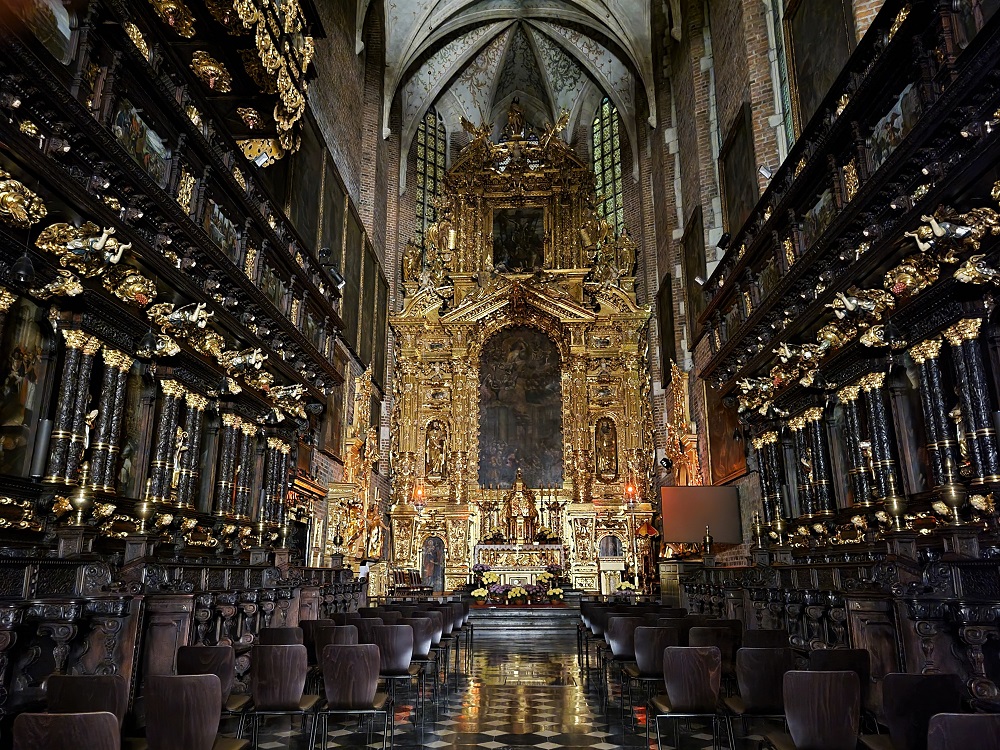
The dazzling church is also said to be home to the biggest organ in Krákow.
Old Synagogue
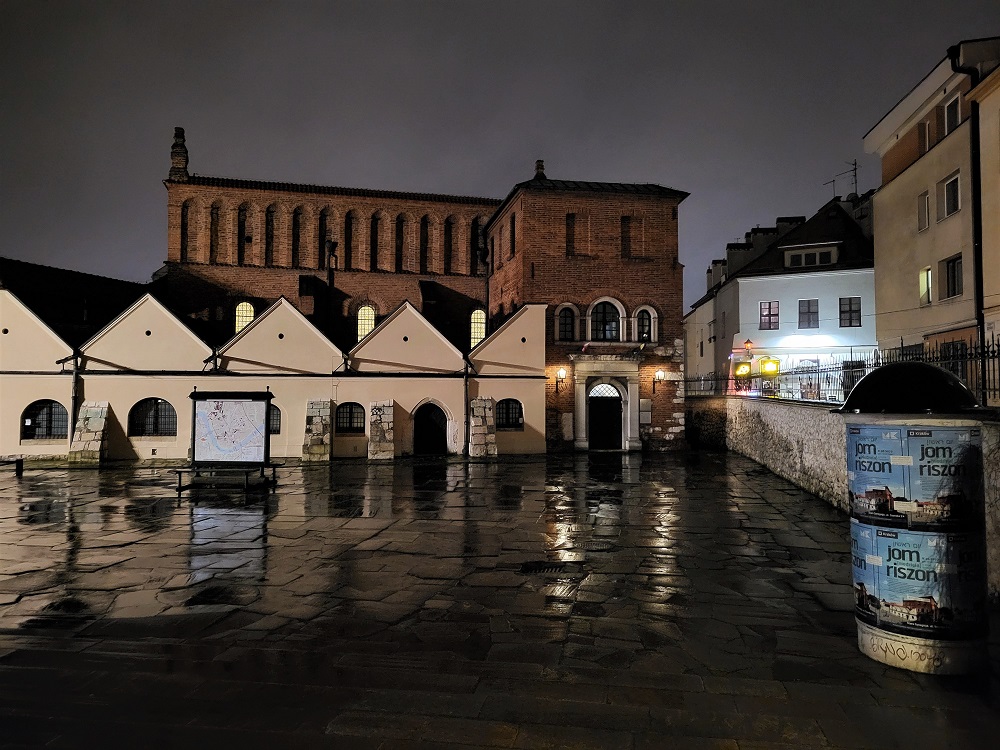
This historic synagogue, which dates back to the 15th or 16th century, today houses a museum about the history and culture of the city’s Jews.
I’d been keen to visit the synagogue as I wanted to learn more about the city’s Jewish heritage, but it was closed when I stopped by, so again, I made do with admiring its exterior instead.
Zalewajka restaurant

When I travel I like to try the local cuisine as possible, so when I spied Zalewajka, which specialises in traditional Polish fare, I immediately booked a table.

Keen to sample as much as possible, I opted for the five-course tasting menu.
The menu consisted of two half portions of soup – in this instance, sour rye and beetroot.

This was followed by cabbage leaves stuffed with meat and rice served with a tomato sauce and a mushroom sauce, a selction of pierogi and pork ribs roasted in beer and honey with fried cabbage (above).
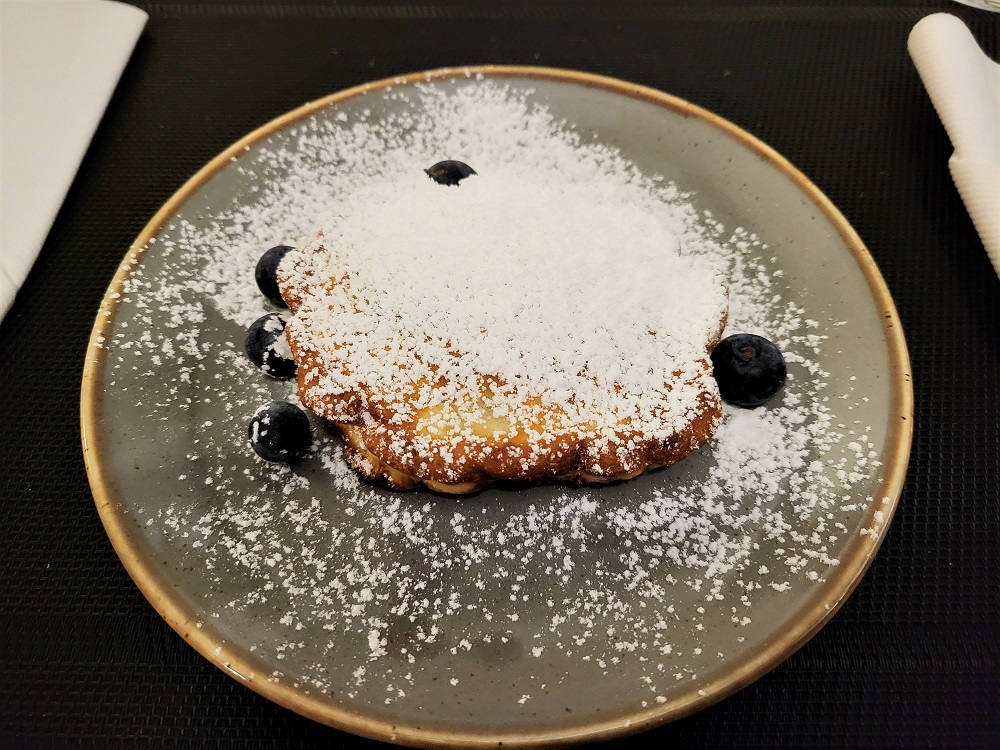
The meal ended with apple pancakes (above) and the whole affair was washed down with a glass of Polish wine.
The food was excellent and I enjoyed having an opportunity to sample the different flavours, even if everything on my plate (sour rye soup) wasn’t quite to my taste.

A fine tour. Thank you.
LikeLiked by 2 people
Thank you 🙂
LikeLiked by 1 person
That last church is certainly stunningly ornate! But I think I prefer the Church on the Rock.
LikeLiked by 2 people
Thanks Anabel, I also preferred the Church on the Rock. There was something really charming about it.
LikeLiked by 1 person
That organ in the church!! It looks a beautiful place 🙂
LikeLiked by 2 people
The church was an unexpected surprise and spectaular inside. I was really glad I visited 🙂
LikeLike
There’s so many beautiful churches here. And the food looks delicious. Can’t say I’ve ever had beetroot soup before, but it looks really pretty.
LikeLiked by 2 people
Kraków has an abundance of beautiful churches and they were one of the highlights of the trip. The food was great! I hadn’t had beetroot soup before either, but it was delicious.
LikeLiked by 1 person
The architecture of all the buildings is stunning. And I love the look of the museum- I think I would happily wander through there for hours looking at all the displays and exhibits. Such a beautiful place with such a sad history.
LikeLiked by 3 people
The buildings are beautiful and Kazimierz is a great place for just wandering around and admiring the architecture. The Ethnographic Museum was fascinating and full of many interesting artifacts and information about Polish folk customs. The area has such a sad history, but it was good to see it thriving again.
LikeLiked by 1 person
There was a lot of construction in Kazimierz when we were there almost 2 years ago, looks like a lot has been completed now.
LikeLiked by 1 person
I can’t say I noticed much in the way of construction while I was there. I spent a lot of time in Kazimierz as my hotel was there. I really liked it, it was a nice area to wander around.
LikeLiked by 1 person